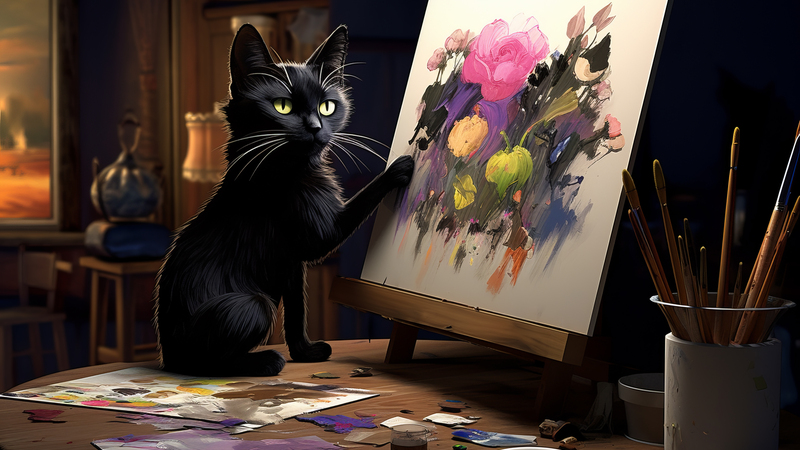Cats have long been cherished companions in human households, offering affection, companionship, and even entertainment. These enigmatic creatures possess a unique charm and a rich history that dates back thousands of years. This article delves into the various aspects of cats, from their historical significance and diverse breeds to their behavior and care requirements. Understanding these aspects can enhance our relationship with these delightful pets and ensure they lead healthy, happy lives.
A Brief History of Cats
Ancient Beginnings
Cats have been part of human civilization for millennia. Archaeological evidence suggests that domesticated cats first appeared in ancient Egypt around 4,000 years ago. The ancient Egyptians revered cats, associating them with the goddess Bastet, who symbolized home, fertility, and protection. Cats were often depicted in art, and their presence was considered a sign of prosperity.
Spread Across Continents
As trade routes expanded, cats spread to other parts of the world. By the time of the Roman Empire, cats were widespread in Europe. They were valued for their ability to control pests, and their presence became more common in homes and public spaces. During the Middle Ages, cats faced periods of suspicion and persecution, often associated with superstitions. However, their value as pest controllers ensured their survival and eventual reacceptance.
Understanding Cat Breeds
Popular Domestic Breeds
Today, there are over 70 recognized cat breeds, each with its own unique characteristics. Some of the most popular breeds include the Persian, Siamese, Maine Coon, and Bengal. The Persian cat is known for its long, luxurious fur and calm demeanor. Siamese cats are celebrated for their striking blue eyes and vocal nature. Maine Coons, one of the largest domestic breeds, are friendly and sociable, while Bengal cats are admired for their wild appearance and energetic personalities.
Rare and Exotic Breeds
In addition to popular breeds, there are several rare and exotic cat breeds that captivate enthusiasts. The Sphynx, known for its lack of fur, is both unique and high-maintenance, requiring regular skin care. The Scottish Fold stands out due to its distinctive folded ears, a trait resulting from a genetic mutation. The Abyssinian, one of the oldest known breeds, boasts a sleek, ticked coat and an active, playful nature.
Cat Behavior and Communication
Body Language
Cats communicate primarily through body language. Their tail position, ear orientation, and eye contact can convey a range of emotions and intentions. A cat with an upright tail is often happy and confident, while a lowered tail might indicate fear or submission. Ears that are pointed forward signal curiosity or interest, whereas ears that are pinned back can indicate aggression or discomfort. Observing these cues can help owners better understand their cats’ feelings and needs.
Vocalizations
Cats also use vocalizations to communicate. They produce a variety of sounds, including meows, purrs, hisses, and growls. Each sound can have different meanings depending on the context. For instance, a cat might meow to greet its owner or request attention. Purring is generally associated with contentment, although cats may also purr when in pain or distress. Understanding these vocalizations can aid in interpreting your cat’s mood and addressing its needs.
Caring for Your Cat
Nutrition and Diet
Proper nutrition is crucial for maintaining a cat’s health. Cats are obligate carnivores, meaning their diet should be primarily meat-based. High-quality commercial cat foods are formulated to meet their nutritional needs, but some owners opt for homemade diets or raw food. It’s important to provide a balanced diet that includes proteins, fats, vitamins, and minerals. Avoid feeding cats dog food or human food, as these can be harmful.
Health and Veterinary Care
Regular veterinary check-ups are essential for preventing and managing health issues. Routine vaccinations, flea and tick prevention, and dental care are key components of feline health maintenance. Cats are also prone to certain genetic conditions and diseases, such as diabetes, kidney disease, and hyperthyroidism. Early detection and treatment can improve their quality of life and longevity.
Grooming and Hygiene
Cats are generally adept at grooming themselves, but they still benefit from regular brushing to reduce shedding and prevent matting. Long-haired breeds, in particular, require more frequent grooming. Maintaining their litter box hygiene is also crucial, as cats are fastidious about cleanliness. Regularly cleaning the litter box helps prevent urinary tract infections and other health issues.
Creating a Cat-Friendly Environment
Enrichment and Play
Cats need mental and physical stimulation to stay healthy and happy. Providing a variety of toys, scratching posts, and climbing structures can help satisfy their natural instincts. Interactive toys that mimic prey can stimulate their hunting behavior, while puzzle feeders can challenge their problem-solving skills. Regular playtime strengthens the bond between you and your cat and helps prevent behavioral issues.
Safe Spaces and Comfort
Creating a comfortable environment is essential for your cat’s well-being. Cats appreciate having a safe space where they can retreat and relax. This can be a cozy bed, a designated cat tree, or a quiet corner of the house. Ensuring that your cat has access to fresh water, a clean litter box, and a scratching post can contribute to a harmonious living environment.
Conclusion
Cats are fascinating creatures with a rich history and diverse characteristics. Whether you’re a lifelong cat owner or new to the world of felines, understanding their behavior, needs, and care requirements can lead to a more fulfilling and rewarding relationship. You can ensure that your cat leads a happy, healthy life by providing proper nutrition, regular veterinary care, and a stimulating environment. Embrace the joy that comes with having a cat as a companion and cherish the unique bond you share with these remarkable animals.
